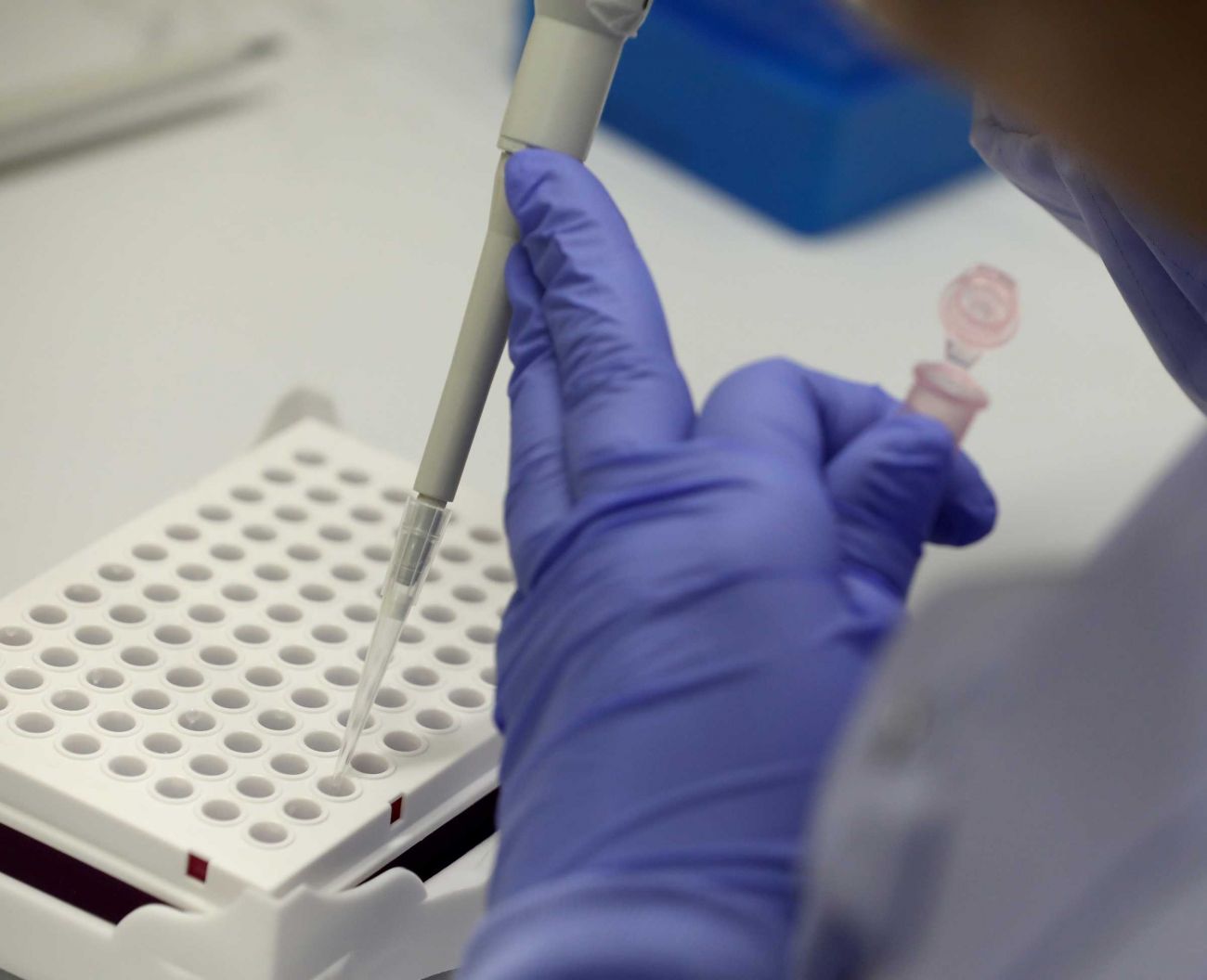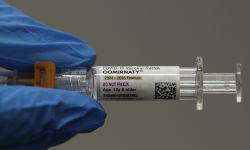COVID surge has largely missed Michigan. Has the state dodged a bullet?

Dec. 3: Michigan hospitals at COVID-induced capacities, as moods turn angrier
Oct. 4: COVID outbreaks in Michigan schools already 8 times higher than last year
Sept. 17: In Michigan schools, ‘mask-optional’ usually means no masks
Sept. 15: A Michigan doctor goes to Facebook over dying, unvaccinated COVID patients
COVID-19 cases in Michigan have largely plateaued, prompting debate about whether the worst of the delta variant has already passed the state.
Case counts are stable, unlike spikes last fall and this spring, and experts say vaccinations and natural immunity from those who have already been sickened by the virus may have blunted the damage.
Hospitalizations from COVID-19 aren’t increasing rapidly in Michigan, and the positive rate of testing has remained unchanged for more than two weeks — indications that an exponential surge has been avoided.
Related:
- Michigan labs fear COVID test shortages. Will new mandates add to strain?
- Michigan hospital leader: Get vaxxed for COVID. We’re near capacity again.
- Republicans advance bills to bar Michigan school mask mandates
- Required COVID vaccines put Michigan hospital worker hesitancy to the test
- Biden vaccine mandate: What’s it mean for Michigan schools, those who refuse?
- Michigan COVID nurses reach their limit: ‘I know I can’t do this forever’
- 2 million Michigan workers may be impacted by Biden’s vaccine mandate
- Michigan: Masked or vaxxed students more likely to avoid COVID quarantine
That’s reason for optimism, but public health experts caution that Michigan is far from safe: School just started and the state’s vaccination rate of 47.2 percent of those 18 and over is less than the rate in Florida, where the virus is surging and filling hospitals with more than 13,000 patients.
“I am happy we are not increasing (rapidly),” said Marisa Eisenberg, an epidemiologist at the University of Michigan who works on the COVID-19 modeling that the state uses.
“I’m glad it has slowed but I am still worried. I’m not yet at cautious optimism.”
On Tuesday, new cases averaged 1,578 for the past four days, down from an average of 2,224 late last week.
Cases have risen in the past month, but at a far slower pace than earlier surges: The seven-day average of new cases rose 139 percent to 1,895 since Aug. 4, compared to a 370 percent increase in the month after cases first crossed 1,000 in both the fall and the spring.
Those trends leave Dr. Ruta Sharangpani, president of the Michigan Association of Preventive Medicine and Public Health Physicians, “wondering if we dodged a bullet. I hope we did.”
But she’s quick to add that “I really think it’s too early to tell.”
‘A lot of uncertainty’
Why has Michigan so far avoided spikes experienced elsewhere in the nation?
Eisenberg and others note that epidemiology, and especially as it relates to this virus, has not allowed for simple answers.
For over a year, scientists have tried to figure out how the pandemic is spreading to understand and predict its next dimension.
They have mined cell-phone data to measure person-to-person contact, studied case counts and looked at the impact of past infections, which confer some immunity.
But forecasters have been wrong before and there is no accepted single formula for predicting how the virus will spread.
Indeed, the same researchers from Yale, Harvard and Stanford who accurately predicted the decline in cases in Michigan in the spring — before it was obvious in daily reported cases — also believed that neighboring states would experience that same surge.
Instead, Michigan experienced the worst surge in the nation for over a month, hitting nearly 9,000 cases per day in mid-April, while neighboring states Indiana or Ohio were largely spared.
“(Science) is not a crystal ball,” Eisenberg said. “There is a lot of uncertainty.”
And there are signs the worst of the delta variant could still spread to Michigan: Cases are rising in neighboring states, with Ohio averaging 50 cases per 100,000 people per day and Indiana at 59 per 100,000. Both are more than double Michigan’s rate of 23 per 100,000.
Why Michigan might be avoiding surge
If Michigan avoids a larger surge, some experts believe it may be partially due to natural immunity — protection developed after a COVID-19 infection — that hundreds of thousands developed during the spring surge.
As of Tuesday, Michigan has one of the lowest rates of new infections in the country, and all states in the bottom group — Massachusetts, New York, Michigan, New Hampshire, New Jersey, Minnesota and Maryland — had elevated spring surges.
All have between 19 and 24 cases per day per 100,000.
Conversely, most states with the worst current surges did not have spring waves like the one in Michigan.
Natural immunity, earned through infection and potential illness, certainly helped Michigan after it was “pummelled” in the spring, said Dr. Peter Chin-Hong, an infectious-disease specialist and medical professor at the University of California, San Francisco.
“Whenever you get hit hard you get a vacation,” Chin-Hong told Bridge. “But the vacation doesn’t last indefinitely.”
He said Michigan may be spared now but vaccinations remain necessary to ward off the next wave.
Scientists are trying to determine the duration and potency of natural immunity. Chin-Hong said there isn’t a definitive answer yet because not all infections are the same — some people get very sick and others not at all.
However, a recent study from the U.S. Centers for Disease Control and Prevention showed that Kentuckians who had been infected and but not vaccinated were 2.3 times more likely to be reinfected.
Ingham County health officer Linda Vail, told reporters Tuesday that natural immunity — but more importantly — vaccines have played a major role in suppressing the worst of a delta-fueled COVID comeback.
But it can be difficult to know for sure what’s behind the fine points of epidemiological data, she and others said.
At the risk of hearing it too many times — COVID-19 is still new, and its mutations “change the rules,” said Sharangpani of the physicians association.
If Michigan avoids a surge, it could greatly reduce the number of COVID-19 deaths which U-M modelers said could reach as high as 6,200 between August and November.
As of Tuesday, there were 395 recorded COVID-19 deaths in August and another 36 so far in September.
Despite the improvement and positive signs, the virus remains lethal for some. And without clear answers, it deserves respect, said Eisenberg.
“I do still feel we have to remain on guard cautious,” she said.
See what new members are saying about why they donated to Bridge Michigan:
- “In order for this information to be accurate and unbiased it must be underwritten by its readers, not by special interests.” - Larry S.
- “Not many other media sources report on the topics Bridge does.” - Susan B.
- “Your journalism is outstanding and rare these days.” - Mark S.
If you want to ensure the future of nonpartisan, nonprofit Michigan journalism, please become a member today. You, too, will be asked why you donated and maybe we'll feature your quote next time!








